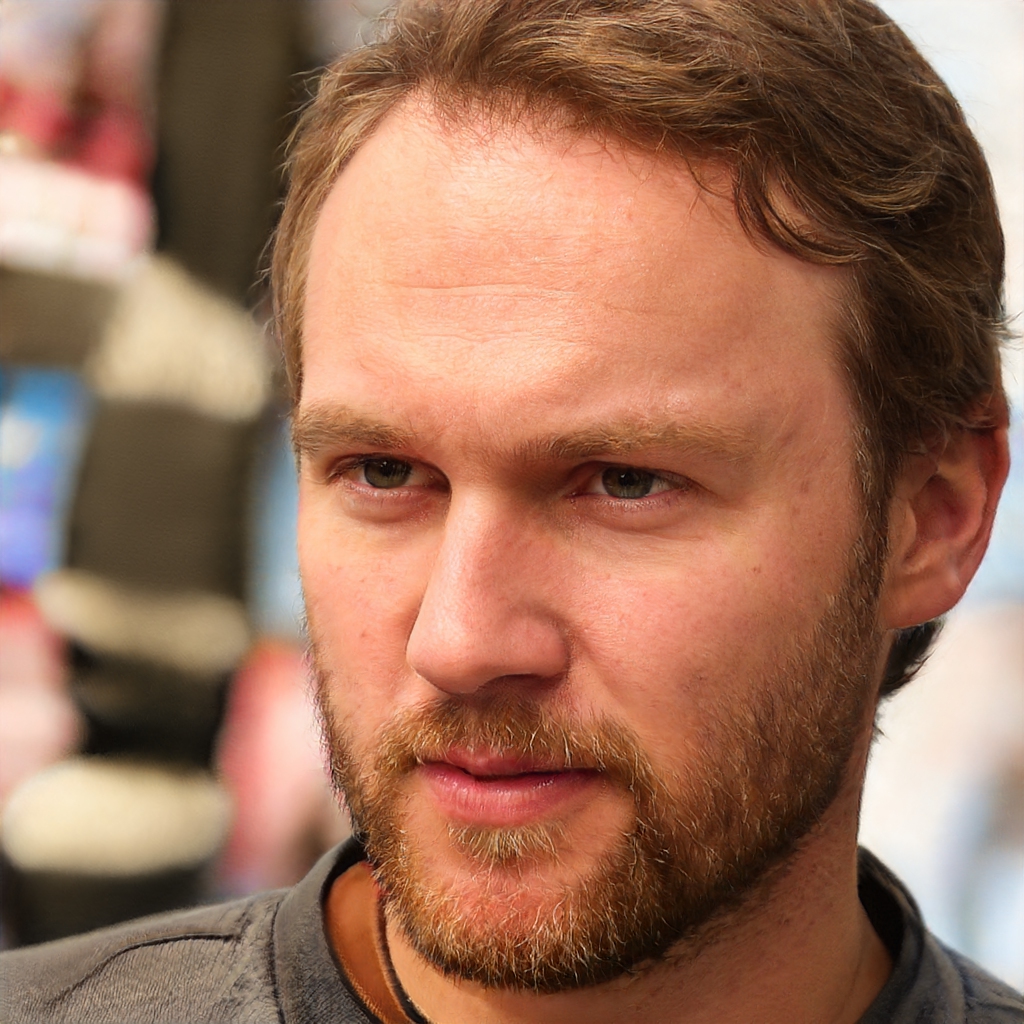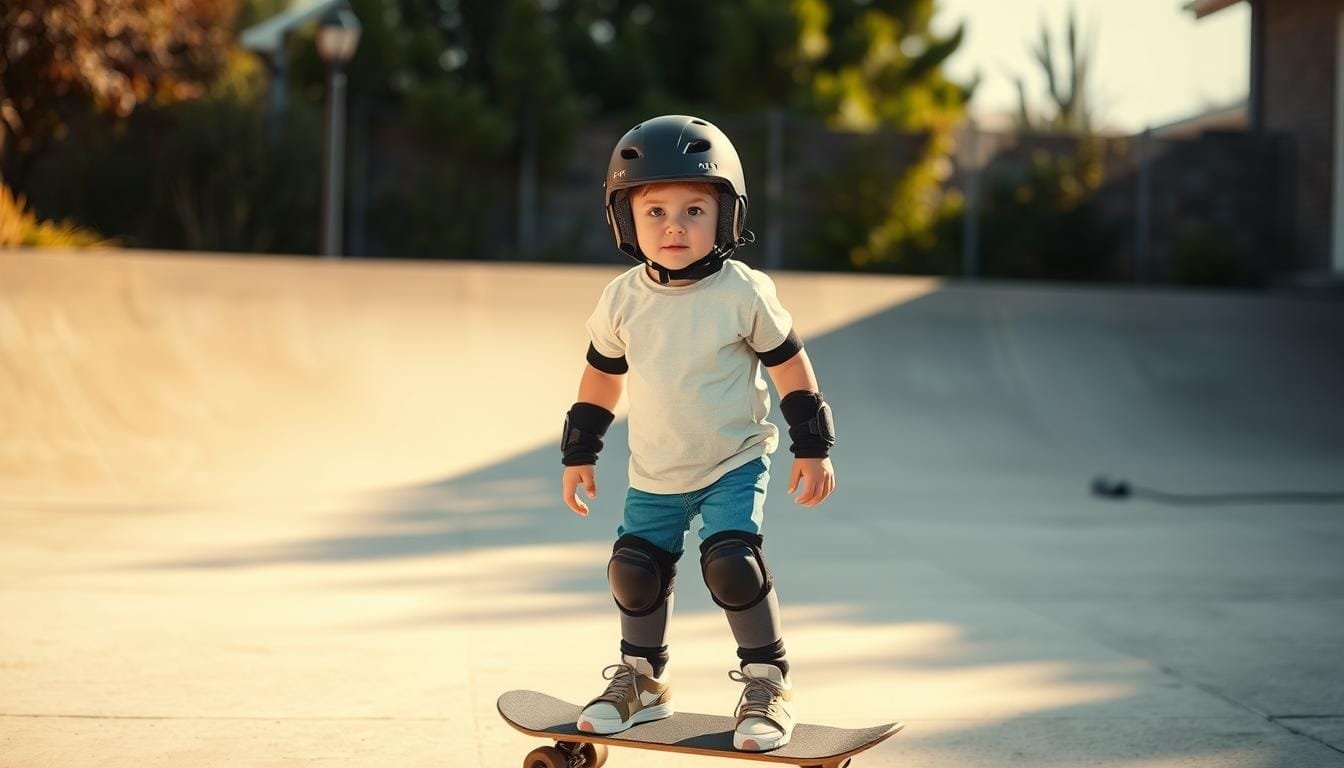Skateboarding is an exciting activity that offers kids fun and growth. It can help your 8-year-old improve their balance and coordination. It also boosts their social skills. This guide provides everything you need to make skateboarding a safe and joyful experience for your child. It’s perfect for beginners and those looking to improve.
Key Takeaways
- Kids aged between 6 and 10 years old usually learn to skateboard quickly and easily.
- Protective gear such as helmets, knee pads, elbow pads, and wrist guards are crucial for safety.
- Frequent visits to the skate park can help maintain your child’s interest and progress.
- Customized boards, like those from SkateXS, are lightweight and designed for young beginners.
- Engagements through social media can enhance a child’s involvement and enjoyment in skateboarding.
- An ideal skateboard deck width for an 8-year-old is around 7.75 inches with a length of 29 inches.
- Starting your child on a skateboard early makes the learning curve less daunting.
Understanding the Basics of Skateboarding
Skateboarding started as ‘sidewalk surfing’ and has become a sport loved by all ages. Teaching your child skateboarding basics is essential. It helps them feel sure and boosts their coordination and core strength.
It’s important to begin with the basics like balancing, pushing, and turning. Letting your child practice on grass or carpet can ease their fear. They should practice 1 to 2 times each week for best results.
Wearing a helmet, knee pads, elbow pads, and wrist guards is key. This gear boosts safety and confidence. It also lessens the hurt from falls, making safety a habit in skateboarding.
Practice in skate parks or empty lots with smooth, clean surfaces. These places are safe and free from distractions.
Positive support is crucial. Celebrate their progress and comfort them after falls. This keeps their interest and confidence high. Kids who practice often develop better skills and confidence.
Choosing a good skateboard is vital. Avoid low-quality boards and go for a quality deck. The right skateboard improves their skills. Sizes range from 22 to 30 inches, based on age and size.
Finding out if they prefer goofy, switch, or regular stance is helpful. Also, they should wear comfy clothes and proper shoes. This ensures they can move freely and feel the board well.
Follow this skateboarding tutorial to build a strong skateboarding base for your kid. The aim is to make skateboarding fun. This fosters a deep love for the sport.
Choosing the Right Skateboard for Your Child
When picking out choosing kids’ skateboards, comfort and learning success matter a lot. The right skateboard makes a huge difference in your child’s skateboarding path. Kids can choose from many types, each fitting various ages and skills.
Mini cruisers are perfect for young skaters, ages 3-5. They’re small, easy to control, and great for beginners. A good quality mini cruiser costs at least $150.
| Skateboard Type | Length | Price Range |
|---|---|---|
| Mini Cruisers | 22 – 29 inches | $150 – $250 |
| Cruisers | 30 – 32 inches | $200 – $300 |
| Standard Skateboards | 30 inches | $200 – $300 |
| Longboards | 31 – 33 inches | $250 – $450 |
For kids 5-8 years old, skateboards 28-32 inches wide are good. Standard skateboards help with balance and foot placement. When they get older and more skilled, move to decks 30-33 inches for better tricks control.
Choosing the right width is key in choosing kids’ skateboards. Wider boards, 7.75 to 8 inches, provide a strong grip for tricks. The best boards match a child’s age, height, and skill level.
It’s not just about size or type, quality matters too. Check the skateboard wheels spin for 30 seconds to a minute. A quality skateboard costs $200 to $300 but is safer and offers a better learning experience.
So, finding the best children’s skateboards involves looking at age, skill, and safety. The right board leads to a fun and successful skateboarding journey.
Finding the Ideal Location to Skateboard
Choosing the right places to skateboard is important for both fun and safety. Skate on empty parking lots, basketball courts, or quiet streets. These spots are great because they have flat, smooth surfaces.
Skate parks are great for beginners, too. They have smaller ramps and areas for different levels. Plus, they offer a friendly community vibe. For more advice on where to skate, read Teach Your 8 Year Old by Chelsea Furlong.
Always check the area for dangers before skateboarding. Make sure it’s clean and dry to avoid falls. It’s crucial to put safety first and have your child wear the right gear. Picking the right spot means a great skateboarding time.
Teaching the Fundamental Skills
Start building your child’s confidence in skateboarding by learning the basics. The first step is to understand if they skate with their left foot forward (regular-footed) or right foot forward (goofy-footed).
Getting their feet in the right position is key. Your child should put the front foot near the front bolts and the back foot on the tail. Then, teach them how to push off, making sure they balance their weight on the front foot.
Now, focus on helping them keep their balance while moving. An empty parking lot is a good place for them to gain confidence in controlling speed and direction. After they’re steady, introduce them to the way of turning by leaning from heel to toe.
Teaching them how to fall safely is also crucial. While it may not seem exciting, it’s important to avoid injuries. Make sure they wear protective gear like helmets, knee and elbow pads, wrist guards, and proper footwear. For more tips on how skateboarding helps with balance, check out this article.
When you move to a skatepark, start with the basics like flat ground and small ramps. Many kids are new to slopes, so go slow. Skating with friends or taking group lessons can make learning more fun and effective.
To make sure they keep loving skateboarding, focus on the fun side. The GOSKATE Beginner Skateboard package is a great tool for them to learn new skills and tricks. The main goal is enjoying the journey, not just getting good at it.
Encouraging Practice and Persistence
Learning to skateboard is all about practicing skateboarding often and not giving up. It helps to have a regular schedule for practice. This way, your child can get better and build muscle memory.
Always cheer on your child, no matter how good they are right now. Celebrate their achievements, big or small. Realize that falling is part of learning. This understanding can lessen the fear of falling and encourage them to keep trying new tricks.
Using smart skateboarding practice tips is game-changing. Begin with easy tricks and slowly try harder ones. For instance, get good at ollies on two, then three, then four stairs before moving on to tougher moves. Keep trying until you’re too tired to go on. That’s how you get better.
Skateboarding also teaches important lessons like never giving up and sticking with it. Telling your child to keep trying a trick until they do it teaches them that not giving up is worth it. Getting past the fear of falling can greatly increase their determination to keep practicing.
Successful people like Tony Hawk and Steve Jobs show that sticking with something can lead to great achievements. Their stories can motivate your child to keep at it. Knowing that determination can bring about success and skill might inspire them to keep going.
Inspiring Your Child’s Confidence
Skateboarding can change a child’s life, mixing fun with learning important life lessons. Sadly, only 21.6% of kids get enough daily exercise, making skateboarding a perfect choice. It not only helps them stay fit but also boosts their mental strength.
To help your child in skateboarding, create a supportive environment. Praise them for small wins and encourage them to overcome challenges. Studies show that active parents raise active kids. This can really boost your kid’s confidence on a skateboard.
Adding physical activity to your family’s routine is key. Many kids spend up to seven hours on screens, so physical fun is vital. Skateboarding is a great way to get moving and have fun away from screens.
Kids who don’t like team sports often do well in skateboarding. It lets them grow at their own pace, increasing their confidence.
Setting reachable goals can really help kids feel more confident. There are over 65 activities designed to boost confidence in kids. From memory games that sharpen the brain to crafting that shows off their skills.
In conclusion, skateboarding teaches kids about self-respect as well as physical skills. By supporting them and providing a loving space, you can help increase your child’s confidence. This will help them succeed and be happy in life.
Maintaining the Skateboard
Learning how to take care of a skateboard is key for any skater. It ensures their board stays in great shape. Teach your child to check their board often for cracks or damage. This step is crucial for keeping the skateboard safe to use. They should also clean the deck to remove dirt, making their ride smoother.
Caring for the wheels and bearings is next. Clean wheels are crucial for the board to perform well. Show them how to take off the wheels and clean them with soap and water. Also, teach them to oil the bearings to keep them running well. Checking the wheels for wear and tear is important. They need to know when it’s time for new ones.
Finally, let them know when to get new parts for their skateboard. Check the trucks and grip tape often for damage. Upgrading parts can make the skateboard work better and be more fun to ride. Teaching your child these maintenance tips helps keep their board good for a long time. Plus, it makes sure they’re safe and have fun skating.

I’m John Peterson, a passionate skater, blogger, and lifelong enthusiast. I’ve been skating for over 9 years and have gone on to write a blog dedicated to the sport of skating and its culture. Through my blog, I strive to share my knowledge and experience of the sport with all who are interested. From beginner tips, tricks, and equipment reviews to interviews and event coverage, I cover it all. So read my blog as I explore the wonderful world of skating!

